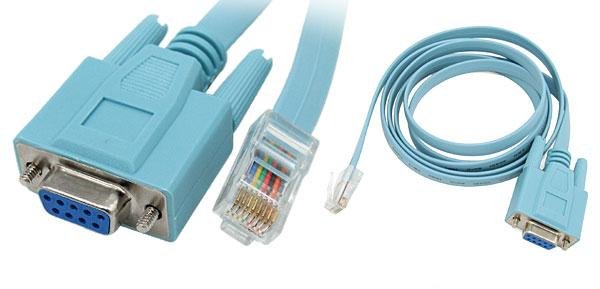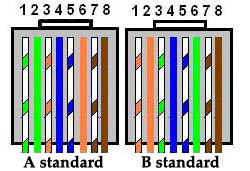CCNA – Basic Questions
Here you will find answers to CCNA – Basic Questions
Question 1
For which type of connection should a straight-through cable be used?
A. switch to switch
B. switch to hub
C. switch to router
D. hub to hub
E. router to PC
Answer: C
Explanation
To specify when we use crossover cable or straight-through cable, we should remember:
Group 1: Router, Host, Server
Group 2: Hub, Switch
One device in group 1 + One device in group 2: use straight-through cable
Two devices in the same group: use crossover cable
In this case we can use straight-through cable to connect a switch to a router -> C is correct.
Question 2
Which type of cable is used to connect the COM port of a host to the COM port of a router or switch?
A. crossover
B. straight-through
C. rolled
D. shielded twisted-pair
Answer: C
Explanation
The correct question should be “Which type of cable is used to connect the COM port of a host to the CONSOLE port of a router or switch?” and the correct answer is rollover cable. But we can’t plug this rollover cable directly into our host because it will not work. We often use a RJ45 to DB9 Female cable converter as shown below:

Question 3
What is the first 24 bits in a MAC address called?
A. NIC
B. BIA
C. OUI
D. VAI
Answer: C
Explanation
Organizational Unique Identifier (OUI) is the first 24 bits of a MAC address for a network device, which indicates the specific vendor for that device as assigned by the Institute of Electrical and Electronics Engineers, Incorporated (IEEE). This identifier uniquely identifies a vendor, manufacturer, or an organization.
Question 4
In an Ethernet network, under what two scenarios can devices transmit? (Choose two)
A. when they receive a special token
B. when there is a carrier
C. when they detect no other devices are sending
D. when the medium is idle
E. when the server grants access
Answer: C D
Explanation
Ethernet network is a shared environment so all devices have the right to access to the medium. If more than one device transmits simultaneously, the signals collide and can not reach the destination.
If a device detects another device is sending, it will wait for a specified amount of time before attempting to transmit.
When there is no traffic detected, a device will transmit its message. While this transmission is occurring, the device continues to listen for traffic or collisions on the LAN. After the message is sent, the device returns to its default listening mode.
So we can see C and D are the correct answers. But in fact “answer C – when they detect no other devices are sending” and “when the medium is idle” are nearly the same.
Question 5
Which two benefits are provided by using a hierarchical addressing network addressing scheme? (Choose two)
A. reduces routing table entries
B. auto-negotiation of media rates
C. efficient utilization of MAC addresses
D. dedicated communications between devices
E. ease of management and troubleshooting
Answer: A E
Question 6
When a host transmits data across a network to another host, which process does the data go through?
A. standardization
B. conversion
C. encapsulation
D. synchronization
Answer: C
Explanation
To transmit to another host, a host must go through the TCP/IP model (very similar to the OSI model). At each layer, the message is encapsulated with that layer’s header (and trailer if it has). This process is called encapsulation.
Question 7
Which two Ethernet fiber-optic modes support distances of greater than 550 meters?
A. 1000BASE-CX
B. 100BASE-FX
C. 1000BASE-LX
D. 1000BASE-SX
E. 1000BASE-ZX
Answer: C E
Explanation
Below lists the cabling standards mentioned above
| Standard | Cabling | Maximum length |
| 1000BASE-CX | Twinaxial cabling | 25 meters |
| 100BASE-FX | Two strands, multimode | 400 m |
| 1000BASE-LX | Long-wavelength laser, MM orSM fiber | 10 km (SM)3 km (MM) |
| 1000BASE-SX | Short-wavelength laser, MM fiber | 220 m with 62.5-micron fiber; 550 mwith 50-micron fiber |
| 1000BASE-ZX | Extended wavelength, SM fiber | 100 km |
Note:
+ MM: Multimode
+ SM: Single-mode
(Reference: The official self-study test preparation guide to the Cisco CCNA INTRO exam 640-821)
Question 8
Refer to the exhibit. What type of connection would be supported by the cable diagram shown?
| Pin | Color | Function | Pin | Color | Function |
| 1 | White/Green | TX+ | 1 | White/Green | TX+ |
| 2 | Green | TX- | 2 | Green | TX- |
| 3 | White/Orange | RX+ | 3 | White/Orange | RX+ |
| 6 | Orange | RX- | 6 | Orange | RX- |
A. PC to router
B. PC to switch
C. server to router
D. router to router
Answer: B
Explanation
From the “Pin” and “Color” in the exhibit we know that this is a straight-through cable so it can be used to connect PC to switch.
Question 9
Refer to the exhibit. What type of connection would be supported by the cable diagram shown?
| Pin | Color | Function | Pin | Color | Function |
| 1 | White/Green | TX+ | 3 | White/Green | RX+ |
| 2 | Green | TX- | 6 | Green | RX- |
| 3 | White/Orange | RX+ | 1 | White/Orange | TX+ |
| 6 | Orange | RX- | 2 | Orange | TX- |
A. PC to router
B. PC to switch
C. server to switch
D. switch to router
Answer: A
Explanation
This is a crossover cable so it can be used to connect PC and router.

Question 10
Which two topologies are using the correct type of twisted-pair cables? (Choose two)
A. 
B. 
C. 
D. 
E. 
Answer: D E


